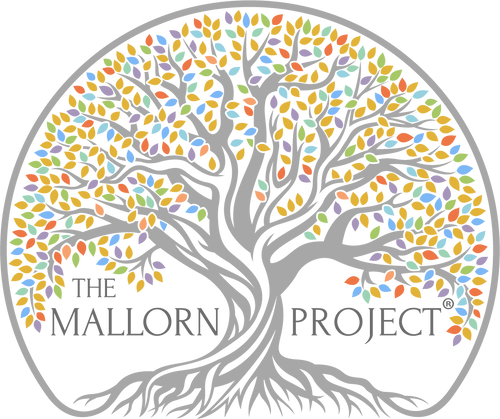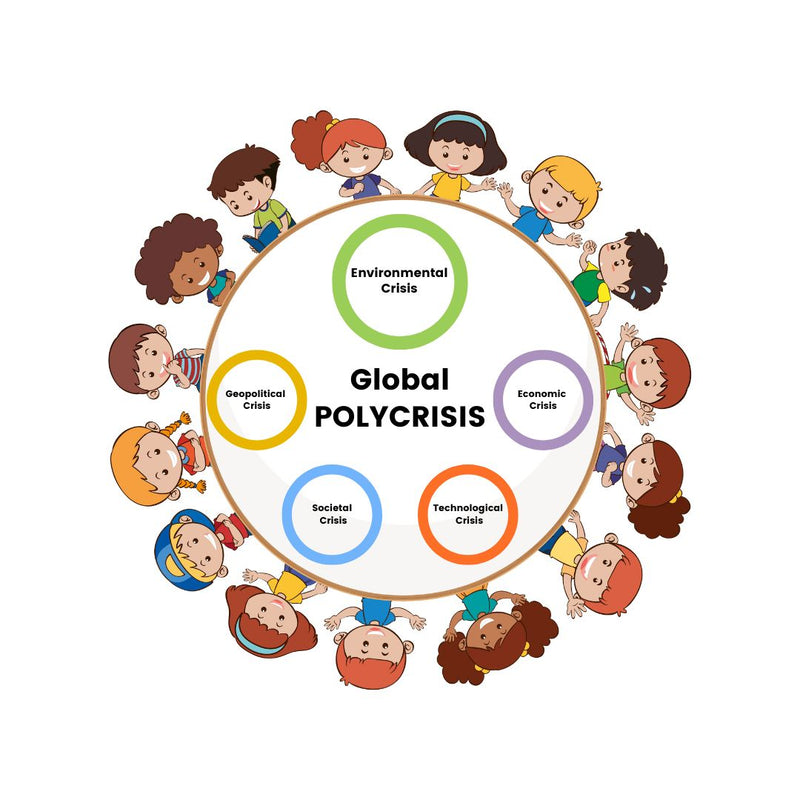What is the global “POLYCRISIS” and why should you care?
2023: YEAR OF THE POLYCRISIS
🌏 World Economic Forum (WEF) calls 2023 “the year of the Polycrisis”.
WHAT IS “POLYCRISIS”?
🌐 Defined by WEF’s Global Risks Report 2023 as “a cluster of related global risks with compounding effects, such that the overall impact exceeds the sum of each part” and has unpredictable catastrophic consequences.
⚠️ Global risks are environmental (including the Extinction-Climate Crisis), economic, geopolitical, societal, and technological. Since these risks are connected, addressing one risk can help address the others.
10 MAJOR COMPONENTS OF POLYCRISIS
⓵ Biodiversity Loss: Rapid decline in variety of animal and plant species due to habitat destruction, overexploitation, pollution, and climate change. It has negative consequences for ecosystem functioning, food security, and discovery of new medicines.
⓶ Climate Change: Long-term alteration of Earth's climate, mainly attributed to burning of fossil fuels and deforestation, which increases atmospheric greenhouse gas (GHG) concentrations. It leads to more frequent and severe weather events, rising sea levels, and ecosystem disruption.
⓷ Resource Depletion: Overconsumption and unsustainable use of Earth's finite resources, like fresh water, arable land, forests, and minerals. It leads to scarcity, environmental degradation, and geopolitical conflict.
⓸ Pollution: Release of harmful substances, like chemicals, plastics, and GHGs, into the environment. It contaminates air, water, and soil, and has detrimental effects on human health and ecosystems.
⓹ Social Inequality: Unequal distribution of wealth, power, and opportunities within and between societies. It leads to poverty, political instability, and marginalization of vulnerable populations.
⓺ Overpopulation: Rapid growth of the global human population, which places greater strain on natural resources, ecosystems, and public infrastructure. It exacerbates other polycrisis components, like resource depletion and pollution.
⓻ Global Health Crises: Emergence and spread of infectious diseases, often due to factors like climate change, habitat destruction, and increased global travel. They lead to significant loss of life, economic disruption, and social upheaval.
⓼ Economic Instability: Increasing prevalence of financial crises, recessions, and depressions, resulting from imbalances and vulnerabilities within the global economic system. It leads to job loss, social unrest, and reduced funding for essential public services.
⓽ Technological Disruption: Rapid advancements in technology that displace jobs, destabilize economies, and create new ethical dilemmas. While technology can address some polycrisis components, it can also exacerbate others, like resource depletion and social inequality.
⑩ Geopolitical Conflict: Tensions and disputes between nations, often driven by factors like resource scarcity, territorial claims, and ideological differences. It can lead to war, displacement, and further deterioration of global cooperation and stability.
EXTINCTION-CLIMATE CRISIS
👣 Real (happening here and now) and human-driven (root cause is humanity’s over-exploitation of nature).
🌍 Biodiversity loss and climate change are 2 of the top planetary risks over the next 10 years. Each one has its own causes and effects – local, regional, national, and international – and must be urgently solved to ensure a viable future.
🦤 Extinction Crisis is as dangerous as the mutually reinforcing Climate Crisis, but it gets comparatively little attention.
🇺🇳 Different United Nations (UN) bodies are dedicated to each crisis: UN Climate Change, via UN Framework Convention on Climate Change (UNFCCC); and UN Biodiversity, via UN Convention on Biological Diversity (UNCBD).
✨ In 2022, the UNFCCC and UNCBD convened meetings of their respective Conferences of the Parties (COPs). UN Climate Change Conference (UNFCCC COP 27) adopted a cover decision that recognizes links between climate change and biodiversity and the need to address them together, in context of achieving the UN Sustainable Development Goals (SDGs). UN Biodiversity Conference (UNCBD COP 15) adopted the Global Biodiversity Framework (GBF), to guide biodiversity policy.
WHAT CAN YOU DO?
🍰 We’re not sugar-coating this catastrophe. Tackling it needs collective as well as individual action, but every single person can be part of the solution.
🙋♀️ You, a regular person, can help. How?
🗣️ Talk about it! Engaging and educating others is one way to help change our story’s ending!
❤️🩹 More people know about Polycrisis – especially Extinction-Climate Crisis – more attention it gets, and more pressure builds on governments to make and implement ambitious plans to solve it.


